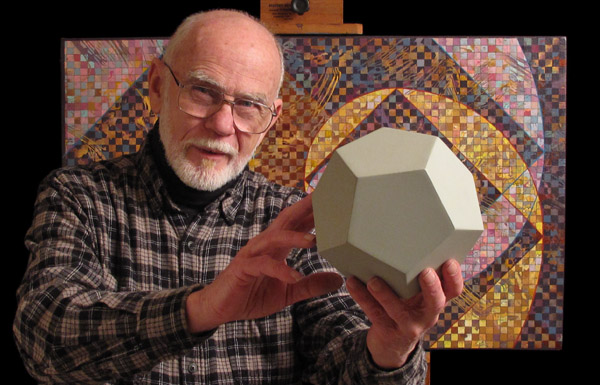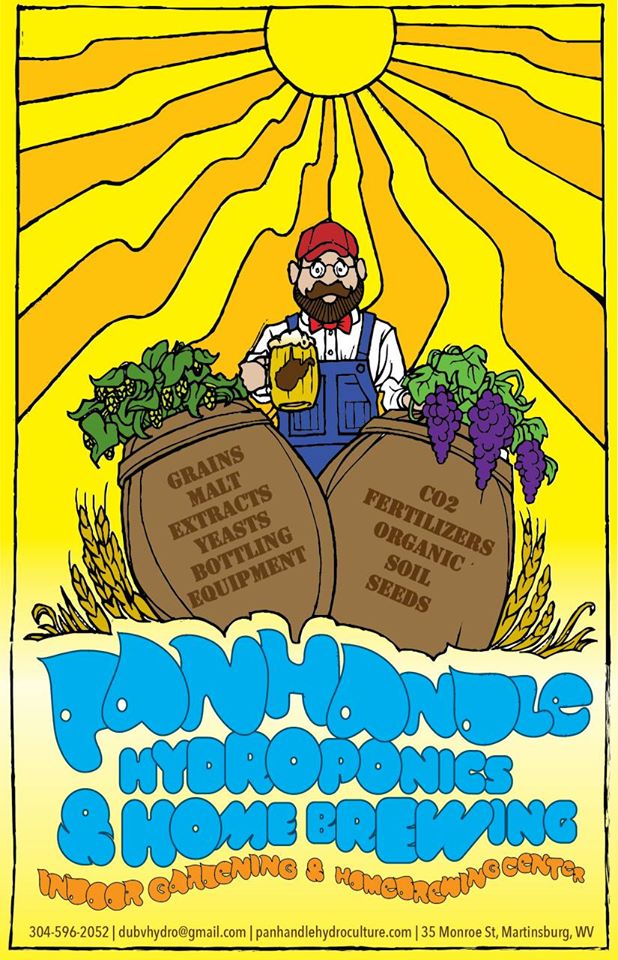Exclusive Interview with Charles Gilchrist
Visual Artist of Sacred Geometry and Mandalas
Written by Christopher Selomon Closson
Charles Gilchrist is, without a doubt, one of the most incredible artists of our time. He has dedicated his life to art and has been studying mandalas and sacred geometry for longer than most of us have been alive. He has well over 3 million views on his YouTube channel, where he shares his discoveries about the subject. In this interview with Charles, we talk to him about surrealism, knowing as a child he had a gift and how his family reacted to it, the subconscious dream world, consciousness, how the times we are living in now are much like the Italian Renaissance and much more. Enjoy!

Christopher Selomon: When and how did you first get into creating art?
Charles Gilchrist: That’s probably one of the most unusual things about me, if there is anything unusual about me, it’s that I knew that I was an artist at a very early age. By the time I was 3 and a half, I was completely convinced that I had been given a talent to accomplish some kind of goal that Deity had given me. I was a very naive little boy. I was raised in a Christian background and I was very much interested in what Christ had to say about things and I was very convinced that God, whoever, whatever that was, had given me talent to do this work. It was some kind of spiritual related work, so I started very, very early. Very early.
CS: Was there a specific medium that you were into the most back when you were that young?
CG: Well I started coloring when I was a little bit over 2 years old in coloring books. That bored me right away and I started copying images from magazines and books and things like that. I tried to make it look like the image that I was looking at. Which is a typical stage of growth for an artist to try to copy other imagery, you know?
Then I started drawing from memory, that was a major kind of breakthrough for me, when I started investigating my own memory and make images from my imagination. So I was doing that by the time I was 4 years old. Everybody in my family and the people in the neighborhood and everyone that saw what I was doing were kind of amazed and I had the realization that I did, in fact, have some kind of special talent because of the way people were reacting to me.

CS: How would people react to your art?
CG: Well, they were either really excited or freaked out because I was doing stuff that most little kids weren’t doing.
CS: [Laughing…] Did you end up going to school for art?
CG: Well, my parents were a little bit uncomfortable with that. I was kind of discouraged by my family. They weren’t really sure that they wanted an artist in the family, you know? They were a very conservative family.
CS: Yea, I feel like there’s a lot of people who are in that situation. Do you have any advice for anyone who is in the same place, where their family isn’t supportive?
CG: What happens is you keep going or you don’t. They either drain you out of it, or you keep going. I kept going. I was pretty stubborn. But by the time I was about 10 or 11 years old, they were finally convinced that I did have talent and my first real feature was of a perfectional painter. I was the youngest student that she ever took.
Her name was Mrs. Frickle. She was a really good portrait painter and a landscape artist. She trained me in how to see and draw and she made a big influence on me.

CS: How did you get into Mandalas and Sacred Geometry?
CG: That’s a good question. I was about 14. My parents moved from Wichita Kansas to the Chicago land area and I went to a school in Park Forest Illinois. It was a brand new school and had a fantastic library and I got turned onto the surrealists. Are you familiar with the surrealists?
CS: I am not. What is a surrealist?
CG: Well, I consider the surrealists to be the major movement of the 20th century. It was a group of artists who were interested in this new kind of energy happening related to psychology. They were doing dream imagery, like investigating their own subconscious dream world and that’s basically where surrealists started. There was a group of them that got together and wrote a surrealists manifesto and they all signed it. So it was a serious movement, a serious Art movement.
The major aspect of it was that it was transcendental. It was self investigative. So my own self investigative art work, my fantasy, surrealist artwork, led me further and further along, until I eventually discovered… Let’s see, what do I say?
CS: Meditation?
CG: Well, I discovered meditation at the same time. I had a rebirthing experience when I was 30 years old where I became convinced that I should concentrate even more seriously on fine art. I ran into Carl Jung and Joseph Campbell, people like that, that were very interested in mythology and psychology. I also got turned onto TM, Transcendental Meditation, and started meditating.
I saw that in my surrealistic work there was a lot of geometric aspects. There were a lot of references to numbers and geometry and I realized that was the deepest level of my own psychology. It went into archetypes that were below, or beneath my own psychology, like universal archetypes. I was tuning into that.
Geometry was a major factor and that led me to the discovery of mandalas. I started doing a bunch of experiments with geometric mandala kinds of imagery and when I discovered that, I also discovered the sacredness of geometry, the archetypal perfection of it and I became enamored of the whole power of mandala making and almost simultaneously sacred geometry. When I found that, then I realized that I had indeed found that ‘thing’ I had sensed I was suppose to be doing when I was a baby.
It was like “Ah ha!” The lights went off and I realized, “Oh this is it, this is what I’m suppose to do!” In the early 1980’s I discovered that and I’ve been working in that area ever since.

CS: There was a point in your life when you were doing photography and that has played a major role in your life. Could you tell us about how you got into photography?
CG: There was a point when I was a young man, I was married, I had babies and I had to make a living and fine art was not paying for anything, basically. So I decided to become a photographer because I knew that I had the training, I understood basic compositional realities, so I said, “Well, you could make a living as a photographer.” I just chose to become a photographer and I climbed up in that world and studied all different kinds of photography and worked in different areas of photography.
I rose to a fairly high level in that field and that has really been beneficial to my teaching potentialities. There was a point when I was doing all this investigative mandala work where I realized it was changing me and affecting my consciousness so profoundly that I just couldn’t keep still about it and I had to start telling people about it.
I used my photography to help me teach and I’m still doing that basically.
CS: Did photography help you get into film making?
CG: Yea! There was a certain point in my life when the digital world and the internet started to happen and I had this profound realization that was where the future was going to be and that it was headed toward the area of video and digital photos and video was going to be the key aspect of education. I decided that if I didn’t get into it I would be an antique. So I started training in that area. My videography is just an extension of my photography.

CS: I like that you said video has helped you to teach what you’ve been learning. I saw one of your videos on YouTube that was called Introduction to Sacred Geometry and it had over 380,000+ views, so it is obviously a good venue.
CG: Yea it was very successful. I think I have somewhere around 3 million views now and it kind of like put me on the map. I think we’re in the middle of a renaissance. I think it’s very similar to the Italian Renaissance because a bunch of information was suddenly available to people that wasn’t ever available to anybody before, almost anybody. The whole thing happened because of the invention of the printing press.
Suddenly books were not handmade anymore. They were machine made and they were much more reasonably priced. People like crafts people, people that weren’t super rich, but had a little bit of income could actually buy books and read books and that’s what fueled all the growth that happened in the Italian Renaissance. Right now the internet is the equivalent of the invention of the printing press, in terms of the vast effect the internet is having on the education of the world.
It’s a very similar situation and I have chosen to teach mostly online, one on one and in workshops and my goal is to contribute to the expansion of consciousness, which I believe is the whole key to this profound growth we’re in the middle of right now.
CS: I think that brings up a good place to talk about one of the projects you’re working on right now. I know you’re working with Gabriel Cavazos on ARCOTU, or Architecture of the Universe, could you describe what this project is?
CG: What I have discovered over the years is that when I find a really potent student and I start systematically teaching him or her into the area of sacred geometry, they have a particular resonance with it and they see it from their own perspective. My teaching inspires growth in them, which I would have never have thought about. Gabriel is one of those kinds of students, perhaps my best student.
He was a very quick study and he has all this background in architecture and the building industry and he came up with this concept of ARCOTU. I thought it was an incredibly powerful direction for him to take and I have tried to support him in any way I can. I’m kind of like one of the people at the top of that group which are all interacting to change the approach towards building to a much more green, sustainable area. I support him completely and am happily part of that neighborhood.
It’s a philosophy of creating architectural projects. Buildings, environments, which are based on natural building possibilities like non-toxic alternative energy systems. Everything that we need to have happen in the architectural arena is covered by ARCOTU and sacred geometry is a very potent aspect of that vision.

CS: Are there any other projects or events that you would like to share with us?
CG: Right now I’m probably in one of the most productive periods of my life. I go through these phases where I think I’m almost all the way through and I can’t really build any further and I find a whole new level of understanding exploding on me and that’s exactly what’s happening right now.
The work I’m doing now is, I think, the most profound work I’ve done in my whole career and it’s the best work I’m doing right now. I’m just going to continue to investigate sacred geometry and share what I’m experiencing and I’ll continue to go until I drop this body.
CS: Yea. Well, I can say for the whole world that we appreciate all the work that you’ve done in the sacred geometry realm.
CG: I appreciate that.
CS: Is there any advice that you would give an aspiring artist?
CG: I would say something about people who are being drawn to sacred geometry. The thing about sacred geometry is, it’s a universal language and a language of form. It’s archetypal. It’s unchangeable and reality’s perfection. The perfection of the universe in the most profound way and the people being drawn to sacred geometry, it’s a phenomenon right now.
There’s millions of people being intuitively drawn to sacred geometry. On the one hand, it appeals to what you would call the right brain, our intuitive side. We sense the perfection of it and at the same time it has all this incredibly beautiful math and it’s perfect from a scientific point of view. It also appeals to our capacities for reason and science. So it’s a reality where both of these spiritual and scientific realities merge into one reality.
It’s a very, very potent combination and that’s what is happening. People are being intuitively drawn to sacred geometry, just like I was. Follow your heart. That’s what you got to do if you’re an artist.

CS: I really appreciate that. If you could share one message with the whole world what would it be?
CG: One of the major dynamics that was going on in the Italian Renaissance was the conflictual nature that was going on between the scientific community. This new group of thinkers which was thinking in scientific terms and using experimentation and rational thought to come to some notions of the nature of the universe, as compared to, fundamentalist’s approach to the nature of the universe, which was controlled by various religious systems and there was conflict back then. We’re in the same kind of conflict here now.
We are struggling to balance out the masculine and feminine tension and that’s one of the things that sacred geometry does. It dissolves the seeming conflict between spirituality and science. That is what is happening right now in the world. That is the major important part of what is really happening. It’s the merging of left and right brain thinking, the merging of the sacred feminine and sacred masculine together into a cohesive, workable system instead of being a war.
This whole new renaissance that’s happening is all based on the concept of unity consciousness, or oneness. The oneness of the universe is starting to be experienced by numerous people that have never felt anything like that before. The whole essence of sacred geometry begins in the single point.
The first archetype of sacred geometry is the single point, oneness, unity. The whole thing just expands out of that. So it’s a really powerful bridge that can heal the conflictual system that we have going right now and unify science and spirituality. That’s the goal. That’s what we need to do.
CS: Beautiful. I appreciate your time and I want to say thank you again for everything. Thank you for sharing all of your information with us. I am excited to see you at Mad Tea Party!
CG: Alright. Thank you.







